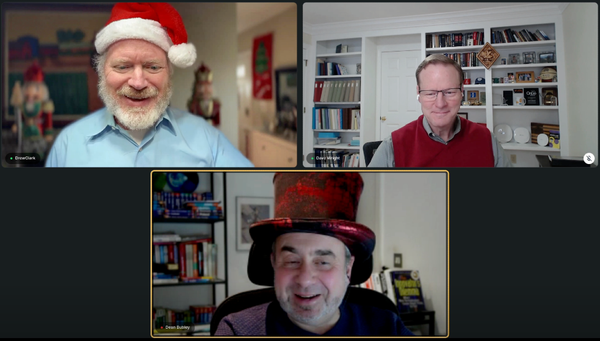Veterans for Broadband Installs, Google Tests Journalistic AI, Ethernet Consortium Formed
A new Ohio-based training program could open veterans to a career in telecom service.
Enoch Eicher

WASHINGTON, July 20, 2023 – Ohio University will train veterans to install broadband internet in southeast Ohio, according to an announcement Wednesday.
The program, slated to start this fall, is a partnership between Ohio University, the Virginia-based National Warrior Workforce, and Tri-County Career Center in Nelsonville and will teach underemployed veterans and reservists to work in infrastructure positions installing fiber, 5G and clean energy, according to Kelley Dunne, CEO of AmeriCrew, which has operated as National Warrior Workforce.
The company provides industry approved training and job placement for veterans and transitioning service members for a career in 5G Wireless, fiber broadband, and clean energy infrastructure.
After the two-week training at Ohio University — with the option for students to take a longer, specialized training at the career center after that — and a certificate in fiber splicing, veterans will enter into a one-year apprenticeship.
While this will serve as a benefit to the veterans, it will also support the state as Dunne said. “Ohio, like many states, is going to have more infrastructure built in rural America in the next five years than it has in the last 50, and it would be a shame if we didn’t figure out how to leverage young men and women who served our country to give them an opportunity to serve in a different way, and also a way that serves their careers and missions,” Dunne said.
A one-week pilot program hosted at Ohio University in May had eight students enrolled, said Julio Aráuz, director of the McClure School of Emerging Communications Technologies at Ohio University.
Going forward, classes will be 10 to 12 students, and he expects the program will enroll 150 to 200 students per year.
Google tests A.I. tool to write news articles
Google is currently conducting tests with an artificial intelligence tool called Genesis, which has the potential to generate news articles.
It was presented to media outlets like the New York Times, the Washington Post, and News Corp, the owner of the Wall Street Journal, as a “helpmate,” according to the New York Times on Thursday.
Google clarified in a statement that it is still in the early stages of exploring the tool, which aims to assist journalists by suggesting headline options or different writing styles. The company emphasized that the intention is not to replace journalists with this technology.
“These tools are not intended to replace the role journalists have in reporting, creating and factchecking their articles,” Google said. “Our goal is to give journalists the choice of using these emerging technologies in a way that enhances their work and productivity, just like we’re making assistive tools available for people in Gmail and in Google Docs.”
The news comes after a report last month by accounting firm KPMG estimated that 43 percent of the tasks performed by authors, writers and translators could be carried out by AI tools.
The Organization for Economic Co-operation and Development reported last week that major economies were on the “cusp of an AI revolution” that could lead to job losses in skilled professions such as law, medicine and finance.
Tech giants join forces on ethernet consortium
A group of tech industry companies including Meta, Microsoft and Intel and France’s Atos have formed an ethernet consortium in a bid to support networks suited for artificial intelligence, Atos announced on Wednesday.
The Ultra Ethernet Consortium will build a complete ethernet-based communication stack architecture for high-performance networking, according to a statement by Atos.
The technical goals for the consortium are to develop specifications, APIs and source code to define protocols, application program interfaces and data structures for Ethernet communications, said the statement, adding the UEC will define software, storage, management and security constructs for different operating environments.
Ethernet is a technology for connecting devices in a wired local area network or wide area network. It enables devices to communicate with each other via a protocol, which is a set of rules or common network language.
According to the statement, UEC will capitalize on ethernet’s ubiquity and flexibility for handling a wide variety of workloads while being scalable and cost-effective.
“This isn’t about overhauling Ethernet,” said Dr. J Metz, Chair of the Ultra Ethernet Consortium. “It’s about tuning Ethernet to improve efficiency for workloads with specific performance requirements. We’re looking at every layer – from the physical all the way through the software layers – to find the best way to improve efficiency and performance at scale.”








Member discussion